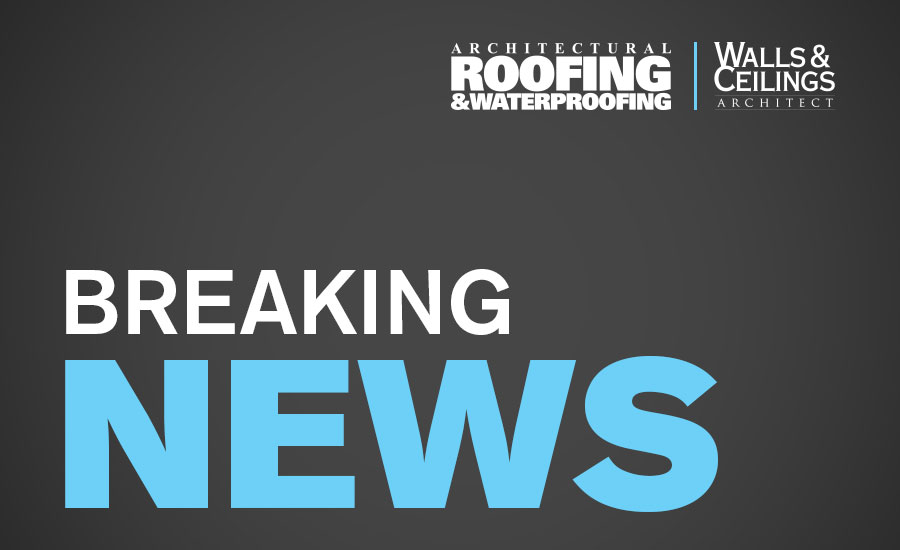Tilt-Up Concrete Association Releases New Temporary Wind Bracing Guideline

MT. VERNON, Iowa — The Tilt-Up Concrete Association (TCA) – an international nonprofit organization that serves to expand and improve the use of Tilt-Up as the preferred building system – has announced the release of a revised guideline on Temporary Wind Bracing of Tilt-Up Concrete Panels During Construction.
According to Jim Baty, Technical Director of the TCA, the guideline is intended to provide a standardized method for the design and erection of a temporary bracing system for use during construction of a Tilt-Up structure. The current OSHA requirement requires that Tilt-Up concrete panels be temporarily braced to prevent panels from overturning or collapsing during the construction of a Tilt-Up structure. Since OSHA does not specify how to prevent Tilt-Up wall panels from overturning or collapsing, the TCA developed a temporary bracing guideline for use by the construction industry.
“The 2012 edition of the TCA Wind-Bracing Guidelines is a combination of technological progress in this industry and reassurance for the performance of these systems,” said Baty.
Baty noted that the industry was challenged when ASCE 37 identified it would change to adopt ASCE 7 pressures as it established the concern that bracing schemes may be under-designed for the resulting wind conditions. However, he noted, TCA’s engineering experts have been able to confirm that Tilt-Up bracing systems are sufficiently designed with today’s standards.
“This confirmation permitted us to move forward with recommendations for response design recommendations on slab thickness and integrating helical ground anchor systems to this more robust version,” he said.
The original TCA Bracing Guidelines, published in September 1994, suggested a temporary bracing design based on a minimum uniform lateral wind pressure of 10 psf., applied over the entire panel area. This was based on a 40-year history of bracing panels that were for the most part, shorter than 30-feet tall. TCA revised the document in 1998 to incorporate the analytical procedures contained in ASCE Standard 7-95, Minimum Design Loads For Buildings And Other Structures. This ASCE standard forms the basis for calculation of wind forces used in the design of wind force resisting systems in completed structures. The wind load provisions of section 6.0, ASCE 7-95 were followed in the design of temporary bracing for Tilt-Up panels during construction.
The application of ASCE 7-95 resulted in an applied lateral wind pressure that varies over and increases with the height of the panels. The 1998 guideline used a construction period wind speed of 70 mph as a minimum in the design of temporary bracing. This was based on a basic wind speed of 90 mph, with a fifty year mean recurrence interval and multiplying it by 0.78 to convert it to a construction period wind speed of 70 mph with a five year mean recurrence interval. This method also incorporated the 3-second gust speeds reported by the national weather service and other weather information services.
In 2005, TCA revised its 1998 wind-bracing guide to incorporate the provisions of SEI/ASCE 37-02, Design Loads On Structures During Construction. The SEI/ASCE 37-02 standard incorporates the design wind load requirements of the ASCE 7-95 standard, using a basic wind speed of 90 mph. For construction periods up to one year, the SEI/ASCE 37-02 standard specifies the use of an adjustment factor of 0.8 to be applied to the basic 90 mph wind speed. This adjustment results in a 72 mph construction period design wind speed, which is the wind speed recommended for design of the temporary bracing system.
The 2012 edition continues to base its design loadings on SEI/ASCE 37-02, however, the wind loadings are now based on ASCE 7-10 provisions. ASCE 37-02 will adopt the ASCE 7-10 wind provisions in the next revision to the publication. In addition, it is very likely that many, if not all local building codes, will endorse ASCE 7-10 in the near future. As such, the TCA decided to endorse ASCE 7-10 as the standard for temporary bracing of Tilt panels during construction.
The major changes to wind load provision of ASCE 7-10 include:
• Introduction of new wind speed maps to be used with a 1.0 load factor for LRFD design
• A 0.6 load reduction factor for ASD design
• Re-introduction of Exposure D in hurricane prone Regions
To purchase your copy of the new Guideline, visit www.tilt-up.org/resources.
For more information, visit www.tilt-up.org.
Looking for a reprint of this article?
From high-res PDFs to custom plaques, order your copy today!




